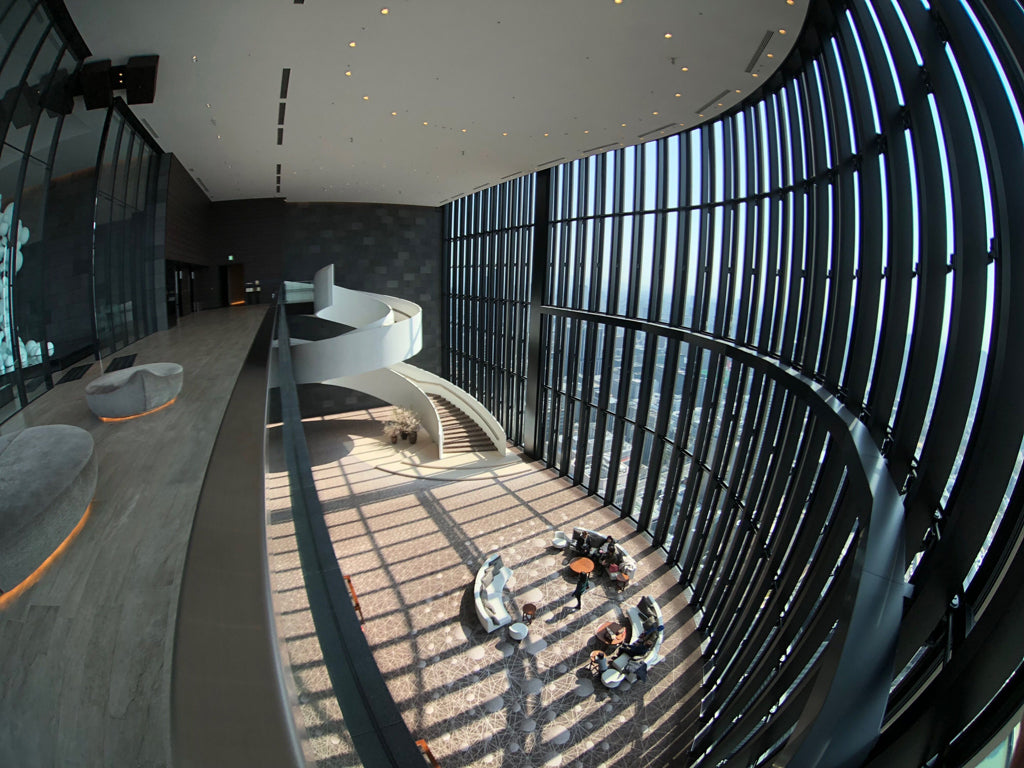
What is a "diagonal/circumferential fisheye lens"?
New lens FISH-EYE 220 from tokyo grapher. Boasting an amazing 220° angle of view, this fisheye lens was designed as a "diagonal fisheye lens" for the iPhone.
This time, what is a "diagonal fisheye lens"? What other types of fisheye lenses are there? We will discuss the characteristics of each.
Types of fisheye lenses
Fisheye lenses, which are characterized by taking advantage of large distortion, can be divided into two types: "diagonal fisheye lens" and "circumferential fisheye lens (or circular fisheye lens)."
-

Photo taken with a diagonal fisheye lens (FISH-EYE 220) -

Photos taken with a circular fish-eye lens (FISH-EYE LENS)
Looking at the difference between the images taken, the image taken with the "circumferential fisheye lens" was recorded in a circular shape or with a part of the circle left (so-called vignetting left), and the image taken with the "diagonal fisheye lens". The difference is that the image is recorded on the full screen.

The light that forms an image through a lens is originally circular, and is captured as a square by a sensor (image pickup device) or film, and is recorded in the photographs and images we often see. The circular light imaged through this lens before being clipped is called the "image circle". (Fig. 1)
There is a difference between the two types of fisheye lenses that is closely related to this structure.
What is a diagonal fisheye lens?

As shown in Fig. 2, a diagonal fisheye lens records images with an image circle larger than the screen diagonal and no vignetting.
Since the image is recorded exactly as you see it on the screen, there is no need for trimming, making it easy to imagine the finished product when shooting.
Especially when shooting with a camera like the iPhone that is easy to use and you want to avoid cropping as much as possible, a diagonal fisheye lens may be suitable.

As shown in Fig. 3, the angle of view of a diagonal fisheye lens is the range that can be captured on the diagonal line of the screen.
What is a circular fisheye lens (circumferential fisheye lens)?
-

[Fig. 4-A] All the image circles are within the screen -

[Fig. 4-B] Clipped image leaving the edges of the image circle within the screen
As shown in Fig. 4, a lens whose image circle fits entirely within the screen or whose image circle is smaller than the width of the screen is called a circular fisheye lens.
Circumferential fisheye lenses are recorded with a circle or a part of the circle left as they are taken, so trimming is necessary to use as a photo without vignetting.

In the case of a circular fisheye lens, in which the entire image circle is contained within the screen, photographs and images taken are recorded with the entire angle of view (Fig. 5). A characteristic of circular fisheye lenses is that it is difficult to envision the final shape when shooting until you get used to the area that will be trimmed.
The first fisheye lens released by tokyo grapher, the FISH-EYE LENS, was designed using this circular fisheye.
Diagonal fisheye lens for iPhone
FISH-EYE 220
tokyo grapher's FISH-EYE 220 is a diagonal fisheye lens designed for the iPhone. The diagonal fisheye lens makes it possible to capture an amazing 220° angle of view as you see it on your iPhone screen without cropping.
It maintains a diagonal angle of view of 220° when shooting still images and a 180° angle of view when shooting movies. It is possible to realize shooting with a wide angle of view.
Circular fisheye lens for iPhone
FISH-EYE LENS
The FISH-EYE LENS is a circular fisheye lens for iPhone with a 150° angle of view, designed for convenience when shooting so that the hand holding the camera does not appear in the angle of view. You can enjoy the dynamically distorted images unique to a fisheye lens while holding your iPhone firmly, even when shooting with vigorous movement or in locations where your footing is unstable.
With two types of fisheye lenses from tokyo grapher, you can easily and actively enjoy nature, cities, portraits, extreme sports, and other images that have never been possible with an iPhone.



